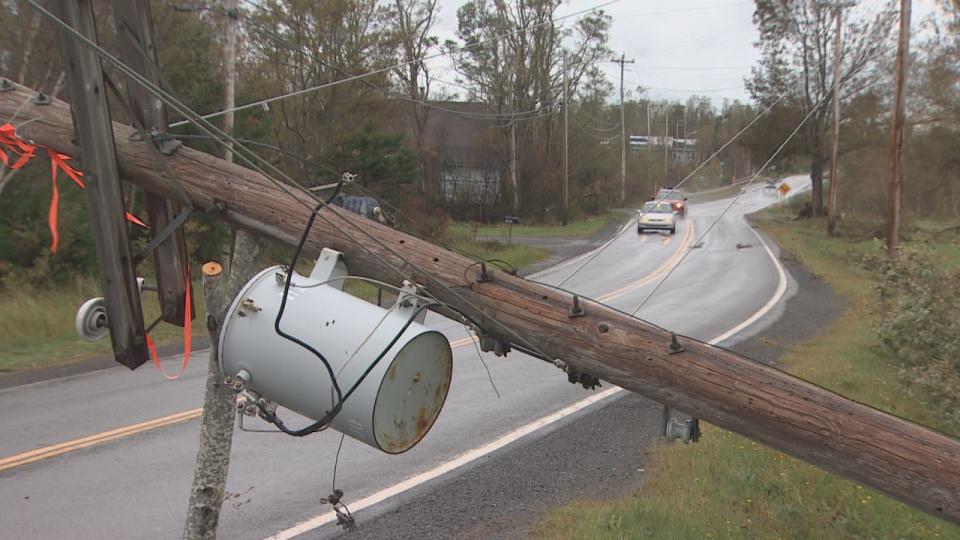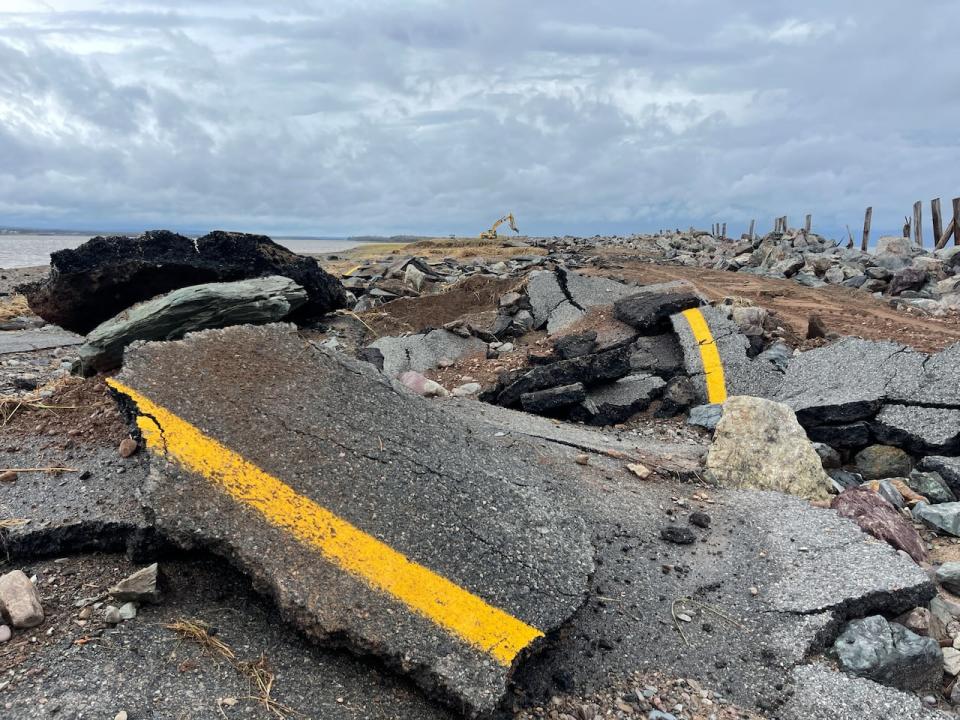Bracing for the next big storm, people in N.S. community demand reliable power

Nearly two years after post-tropical storm Fiona ravaged the shoreline community of Merigomish, N.S., and left homes in the dark for more than a week, residents are still demanding answers from Nova Scotia Power.
Resident Mary Gorman said Fiona is an example of more powerful and frequent storms brought on by climate change. She wants the utility to wake up before the next major storm hits.
"What would make us all happy is for us to be able to get through a storm without a power outage or quite frankly, to be able to get through a power outage when the weather's ideal. I mean, we have those too," she said.
Gorman, along with fellow resident Andy Sherin, asked the Nova Scotia Utility and Review Board to investigate the frequency of outages and long wait times for restoration in the Merigomish area. In January, the board began its formal review of service interruptions in 2022 and 2023.
During those two years, service was interrupted for 309 hours — almost 13 days — over 28 different outages, according to statistics provided by Nova Scotia Power as part of the ongoing review.
"We attempt to resolve the reliability issues informally if we can. If we can't, then it will come up to the board level and that becomes a more formal process resulting in a decision of the board and legally binding direction," said Paul Allen, executive director of the UARB.
Complaints made by a community about service reliability rarely reach the formal review stage.
Nova Scotia Power tracks the "worst five per cent" circuits and feeders, which supply electricity to communities, in its Annual Performance and Standards Report. Areas that make the list for two consecutive years are labeled as problem circuits, while the third consecutive year earns the title of a chronic circuit.
Communities that have repeatedly made the list in recent years include Wreck Cove, Upper Musquodoboit, Port Hastings and Whycocomagh.
Merigomish was on the "worst five" list in 2015 and 2016. It has not since reappeared.
But Gorman insists things haven't improved.
"Service has deteriorated because they are not looking after their equipment and our climate extremes are not only getting worse, but they are becoming increasingly common," she said.

In the aftermath of post-tropical storm Fiona in September 2022, customers were without power for at least a week. Dozens of fallen poles along Route 245 in Merigomish were deemed unsafe, as wires hung along the pavement. (Robert Short/CBC)
Sherin, who has property in the nearby community of Ponds, agrees.
"I think that if more people took advantage of the levers that they have, which is making complaints to the UARB, then Nova Scotia Power will have to clean up its act," said Sherin.
Nova Scotia Power said equipment in the Merigomish area was inspected in late 2023, early 2024. Nine items in the Merigomish area have been identified as "high priority" and are part of this year's repair plans.
But the utility also indicated extreme weather is taking its toll on resources and equipment.
"In the last year and a half, Nova Scotia has experienced multiple winter storms, a hurricane, an extreme cold snap, wildfires, flooding, record lightning and back-to-back windstorms. Our province is also seeing more wind reaching 80 km an hour," spokesperson Hannah Langille said in a written statement.

Fiona made a mess out of the road to Big Island, in Pictou County, N.S. (Robert Short/CBC)
According to Nova Scotia Power, the average number of wind gusts over 80 kilometres an hour in Nova Scotia in the last five years is up 54 per cent from the previous five years.
"When the wind gusts are above 80 kilometres an hour, that's when we start to have more significant impacts to the power system and power interruptions are more likely to occur. So, as the weather changes, our response is changing too," said Langille.
Nova Scotia Power said it has invested an additional $50 million this year to improve reliability and increased its tree trimming budget by $13 million compared to last year.
Langille said the company is also using equipment designed to withstand severe weather.
"This includes bigger, stronger poles that we are installing in various communities across the province; more robust insulators designed for equipment exposed in coastal areas/impacted by the extreme weather," she said.
Meanwhile, the utility wants ratepayers to cover a $24.6-million bill left over from Fiona. That's in addition to $22 million it's requesting to cover storm restorations.
The utility and review board denied Nova Scotia Power's attempt to weaken performance standards used to assess reliability in February 2022. The power company originally requested to exclude weather events such as hurricanes to measure its reliability.
It's up to the board to determine if it needs more information before making a decision. No timeline has been set.
MORE TOP STORIES


